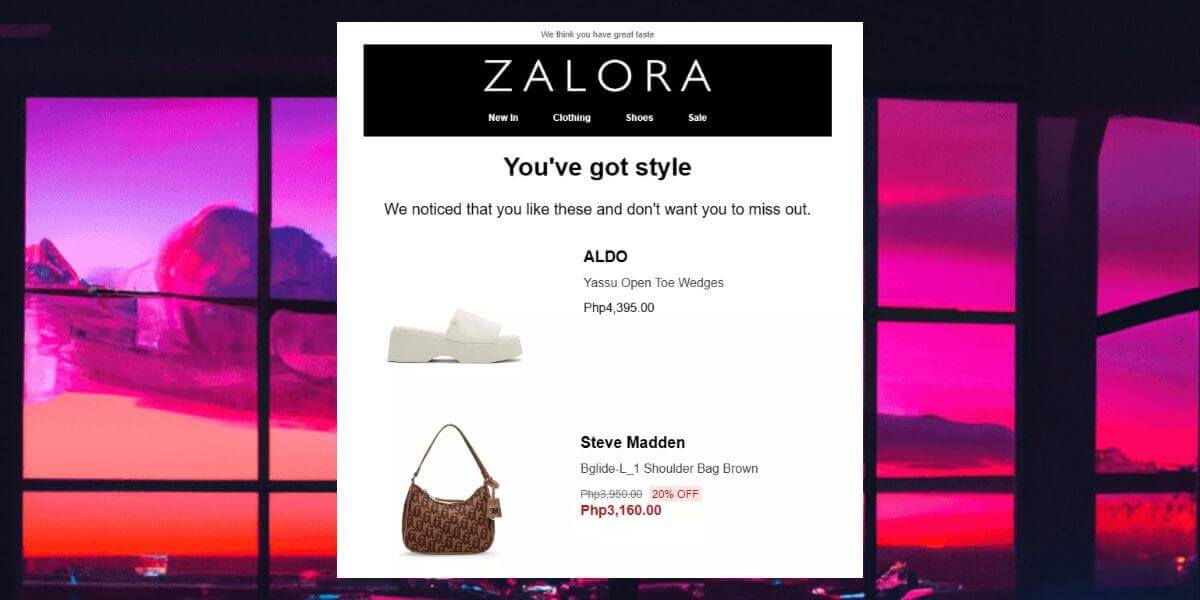Learn how you can Unlock Limitless Customer Lifetime Value with CleverTap’s All-in-One Customer Engagement Platform.

When it comes to brand marketing and sales, email is still on top. For instance, it generates an impressive return on investment (ROI) of $36 for every dollar spent. Email is an old yet effective marketing strategy. And with new technology, it’s easier than ever to track and optimize your email marketing campaigns through key metrics such as email click-through rates (CTR).
Email CTR can successfully predict how engaged your customers are with your brand. So, how do you leverage this metric to convert readers into buyers? Let’s find out.
Click-through rates measure how many recipients clicked on a hyperlink inserted in your email. The link could be a call to action (CTA) that is text-based, image-based, or both.
To calculate email CTR, use this simple formula:
(Number of users that clicked on a link) / (number of email impressions x 100)
For example, if your mail client successfully delivered 1,000 emails, and 100 users clicked on a link or CTA, then your email CTR is 10%. A good email CTR should be between 2–5%. However, it varies across industries.
Ecommerce app emails have a 27% open rate, on average. However, that doesn’t automatically ensure a high CTR.
You only have a few seconds to grab readers’ attention—they’re quick to unsubscribe or mark emails as spam. So, avoid these mistakes when crafting your email:
One of the biggest factors that negatively affect email CTR is a boring subject line. If it doesn’t grab the readers’ attention, the email will likely remain unopened. Use the 4U model to write great subject lines and ensure higher open rates. Make the subject line:

Sephora increases open rates through subject lines that are short, specific, and urgent.
Even if you achieve a good open rate, the readers won’t take any action unless the email itself is interesting. Communicate directly with the reader and make the content appealing so they’ll read to the end. You can use different frameworks to achieve this:
The call to action determines the purpose of the email. What action do you want the users to take when they reach the end? The CTA should be clear, and the button or link to it should be obvious. Also, there should only be one. Multiple CTAs will only confuse the reader.

Despite knowing how to create eye-catching headlines successfully, Sephora seems to fail when it comes to creating CTAs. In this email, they encourage customers to create a wishlist, shop for new products, and download their app!
Modern-day marketing is all about personalization. If the audience feels connected to your brand, they’ll buy frequently and keep returning to your app. So, how do you personalize your email marketing? By making sure you send the right message to the right audience. If customers see a message that’s highly relevant to them, your email CTR will skyrocket.
Here are three things to focus on when creating a personalized email strategy:
Your emails might have a huge unsubscribe rate because the audience doesn’t feel connected to your content. To counter this, segment your users based on their buying behavior. This enables you to send personalized emails, such as reminders on abandoned carts and special discounts on their birthday.
Personalization goes beyond just using the customer’s first name in the email. Send them post-purchase thank-you notes, promotional offers, and personalized product recommendations based on previous purchases.
Southeast Asia ecommerce app Zalora retains customers by sending personalized product recommendations based on past purchases.
Track the customer’s journey through each stage of the sales funnel. This lets you send them targeted, actionable emails along the way. For instance, if they’re at the research stage, send them more information about your brand and products. When they reach the ready-to-buy stage, target them with special discounts.
Many ecommerce companies don’t optimize for email CTRs, resulting in missed opportunities. By conducting a deep analysis of your emails, you can target readers who are more likely to convert into customers.
That’s why it’s important for you to know the metrics that can directly affect engagement on your ecommerce app. Our 2022 Ecommerce App Engagement Benchmark Report has every benchmark for your ecommerce app so you know how your app stacks up against the competition. Download your free copy today.
